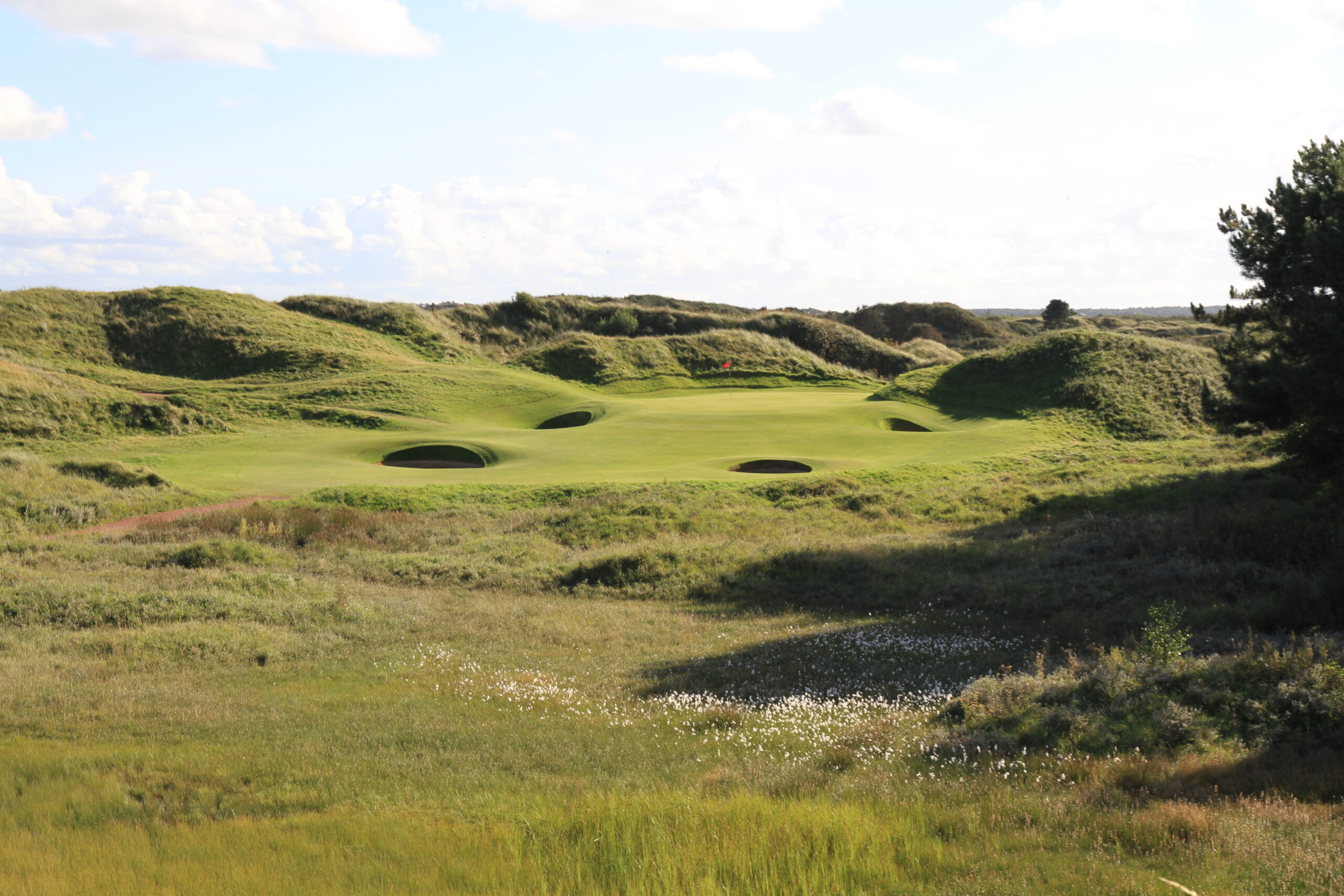The 7 Top Golf Courses in Liverpool
Liverpool may be best known for its vibrant music scene and storied football legacy, but it also boasts a rich golfing landscape that deserves a spot on every golfer’s radar. From the windswept prestige of championship links like Royal Liverpool—host of multiple Open Championships—to the lush fairways of hidden parkland gems just beyond the city limits.
In this guide, we spotlight the finest golf courses Liverpool has to offer, featuring standout holes, rich histories, and all the essential info you need to plan the perfect round.
Royal Liverpool Golf Club
Known as “Hoylake” to many, the Royal Liverpool Golf Club has hosted the Open Championship 12 times, most recently in 2023.
The course is relatively flat, leaving it exposed to the winds coming off the Dee Estuary. It has a quirky layout, with internal out-of-bounds due to the practice ground being flanked by the 1st and 16th holes. During the Open, this is addressed by using the 17th and 18th holes as the 1st and 2nd, allowing the practice area to be repurposed for spectator stands.
Pay close attention to wind direction and club selection—what may seem like a straightforward shot can quickly become tricky when the breeze picks up off the estuary. Keeping the ball low and playing with control rather than power often pays off here.
Opened: 1869
Par: 72
Length: 7312 yards
Designers include: Donald Steel, Tom MacKenzie, Martin Ebert, George Morris (1869), Cameron Sinclair, Martin Hawtree (2010), and Marc Westenborg (2010)
Difficulty: Slope 135 / Rating 72.5
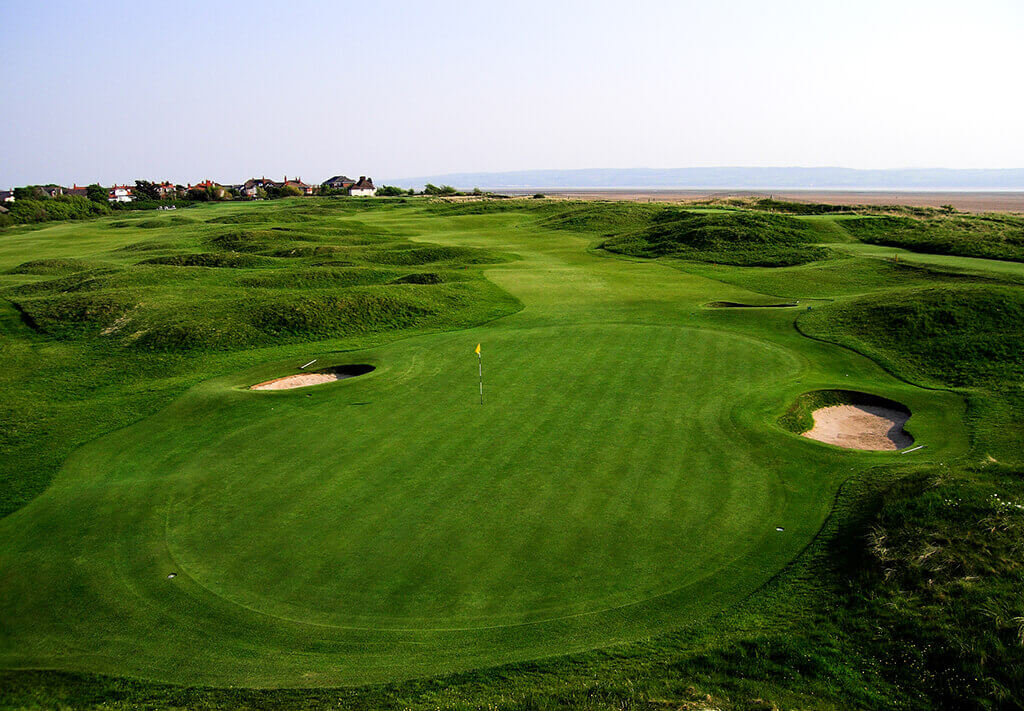
Royal Birkdale Golf Club
Royal Birkdale Golf Club, located in Southport, England, is one of the world’s premier links courses, established in 1889. It has hosted 10 Open Championships, 6 Women’s British Opens, and 2 Ryder Cups—most notably the 1969 match featuring Jack Nicklaus’s famous concession to Tony Jacklin.
Known for its challenging layout with deep bunkers and rolling fairways, the course is undergoing major upgrades ahead of the 2026 Open, including a new par-3 15th hole and redesigned features.
Opened: 1897
Par: 70
Length: 7156 yards
Designers include: Donald Steel, Tom MacKenzie, Martin Ebert, Fred G. Hawtree, Fred Hawtree, Martin Hawtree (1993), John Henry Taylor, and Ken Moodie (1993)
Difficulty: Slope 138 / Rating 74.4
Formby Golf Club
Formby Golf Club offers a top-tier links experience just inland from the sea. Designed by Open Champion Willie Park Jr. in 1912 and refined over the decades, the course was rerouted inland in the 1970s due to coastal erosion. Unusually for a links, it’s framed by conifer trees planted back in 1887, giving it a unique atmosphere.
Distance helps, but accuracy off the tee is crucial. Stray shots can lead to tough escapes from deep bunkers, sideways chips from the trees, or awkward hacks from the heather. A sharp short game around the greens is essential for keeping your score intact.
Opened: 1884
Par: 72
Length: 7128 yards
Designers include: Willie Park (1912), James Braid (1922), Hawtree Ltd (1933), Donald Steel (1980), H. S. Colt (1933), Tom MacKenzie (2011), Martin Ebert (2011), and Frank Pennink
Difficulty: Slope 142 / Rating 76.6
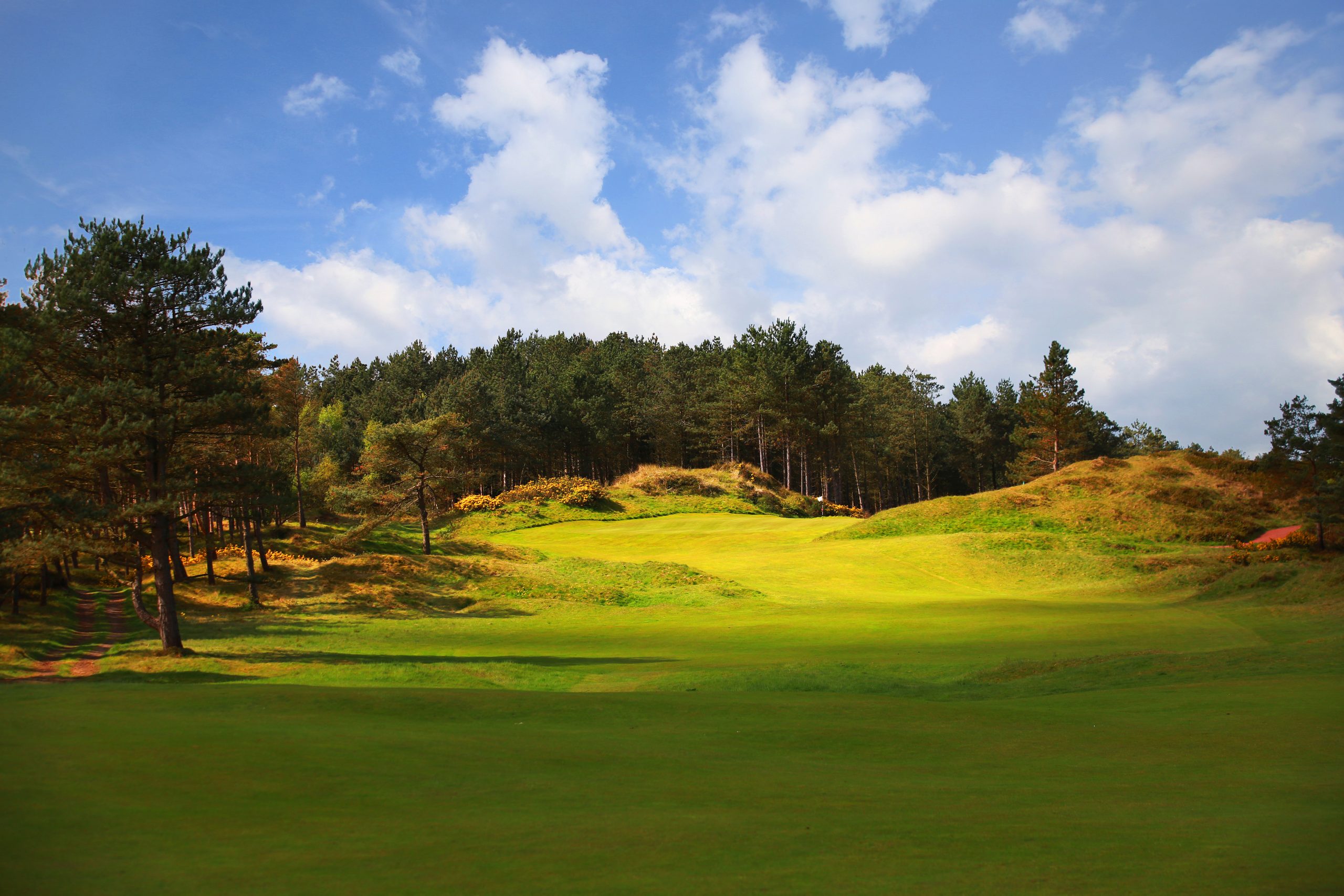
Hillside Golf Club
Tucked alongside Royal Birkdale, Hillside Golf Club is one of England’s finest hidden gems. The front nine winds through dunes and pine, while the dramatic back nine—redesigned in the 1960s—unfolds over bold, rolling terrain. It’s a regular host of Open Championship Final Qualifying and events like the British Masters.
Though private, Hillside offers a warm welcome to visitors, who are treated like members for the day in its elegant 1930s clubhouse, styled after a classic English country home. Unusually for a UK private club, it also allows late afternoon Saturday and midday Sunday tee times during the season.
Opened: 1923
Par: 72
Length: 7109 yards
Designers include: Fred Hawtree (1965), Donald Steel (2002), and Jonathan Tucker (2013)
Difficulty: Slope 138 / Rating 75.2
West Lancashire Golf Club
West Lancashire Golf Club was established in 1873. While the original architect remains unknown, the course’s natural links terrain suggests that Mother Nature played the biggest role in its creation. However, it is known that Ken Cotton and Fred Hawtree carried out major revisions to the layout in the early 1960s.
Playing West Lancashire demands precision and smart course management. The ever-present coastal wind can turn even short holes into a real challenge, so club selection is key. Stay below the hole on approach shots—many greens are elevated and quick, making downhill putts tricky. Use the natural contours to your advantage, and don’t be afraid to play safe off the tee—position is often more important than distance.
Opened: 1873
Par: 72
Length: 7016 yards
Designers include: Donald Steel, Tom MacKenzie, Martin Ebert, Charles Kenneth Cotton (1961), and James Braid (1921)
Difficulty: Slope 140 / Rating 75.4
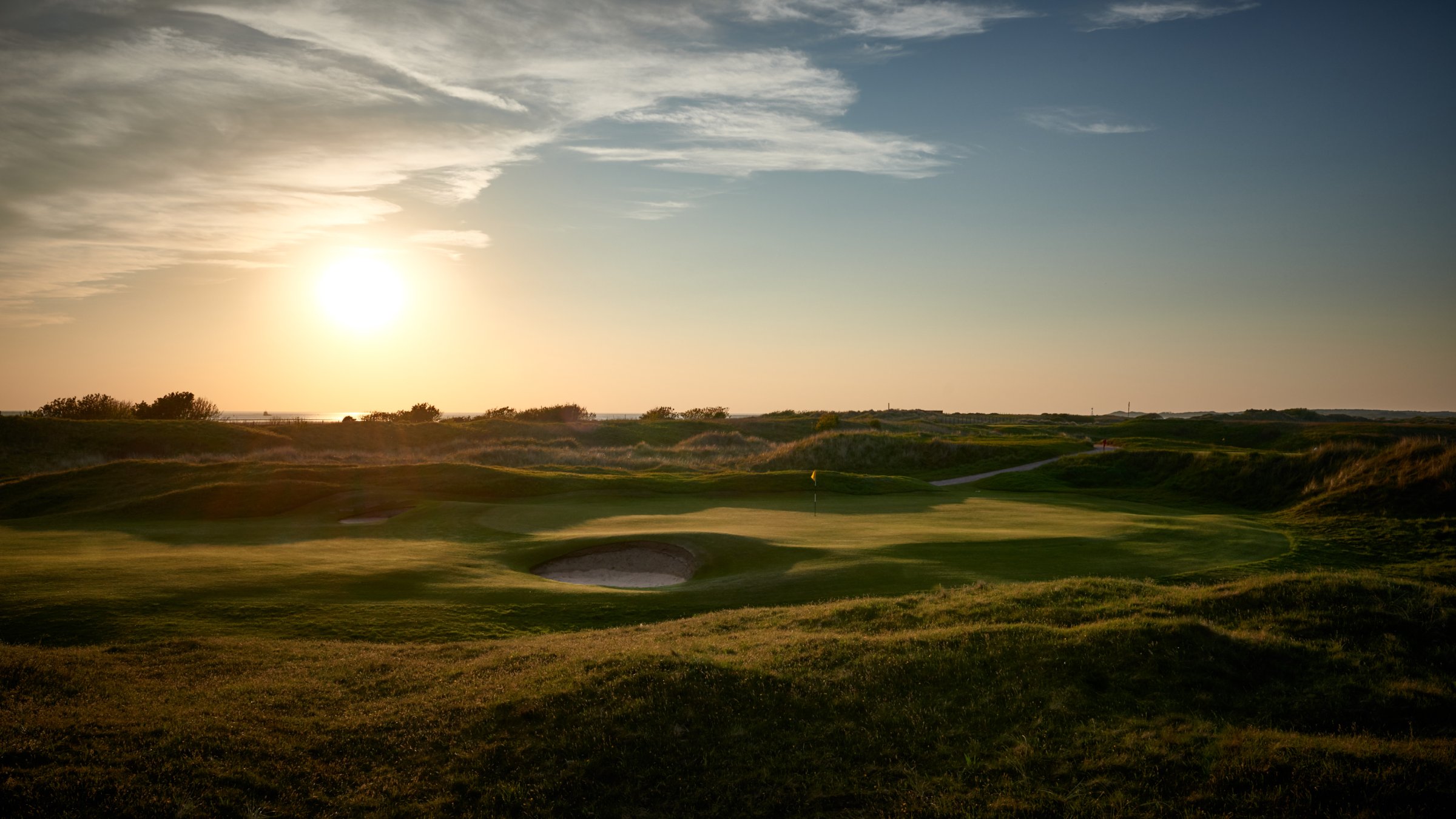
Heswall Golf Club
Set on the Wirral Peninsula with sweeping views across the Dee Estuary to Wales, Heswall Golf Club combines natural beauty with a challenging parkland layout. The course was originally laid out in 1902 by Jack Morris, Royal Liverpool’s professional and nephew of Old Tom Morris, bringing rich heritage to the club’s foundations.
One of Heswall’s standout features is its fast, undulating USGA-spec greens. They roll true but can be unforgiving if you’re on the wrong level or above the hole. To give yourself the best chance of scoring well, aim to leave your ball below the hole whenever possible — uphill putts are far easier to control. Spend time on the practice green before your round to get a feel for the pace, and focus on solid lag putting to avoid those tricky three-putts.
Opened: 1902
Par: 72
Length: 6827 yards
Designers include: Donald Steel (2007), Tom MacKenzie (2007), Harry Vardon, and Frank Pennink (1968)
Difficulty: Slope 141 / Rating 73.4
Wallasey Golf Club
Situated on the edge of the Wirral Peninsula, just 15 minutes from Royal Liverpool, Wallasey Golf Club was established in 1891 to help accommodate the overflow of members from its more renowned neighbor.
The original links were laid out by Old Tom Morris in 1893, and over time, the course has evolved significantly, shaped by coastal erosion, land changes, and the hands of notable architects like Hawtree, James Braid, and Donald Steel. Wallasey’s place in golf history was cemented by one of its own, Dr. Frank Stableford, the creator of the widely used Stableford scoring system.
Opened: 1892
Par: 72 |
Length: 6649 yards
Designers include: Old Tom Morris (1892), James Braid (1929), Hawtree Ltd (1936), Donald Steel (2004), and John Henry Taylor (1936)
Difficulty: Slope 136 / Rating 73.6
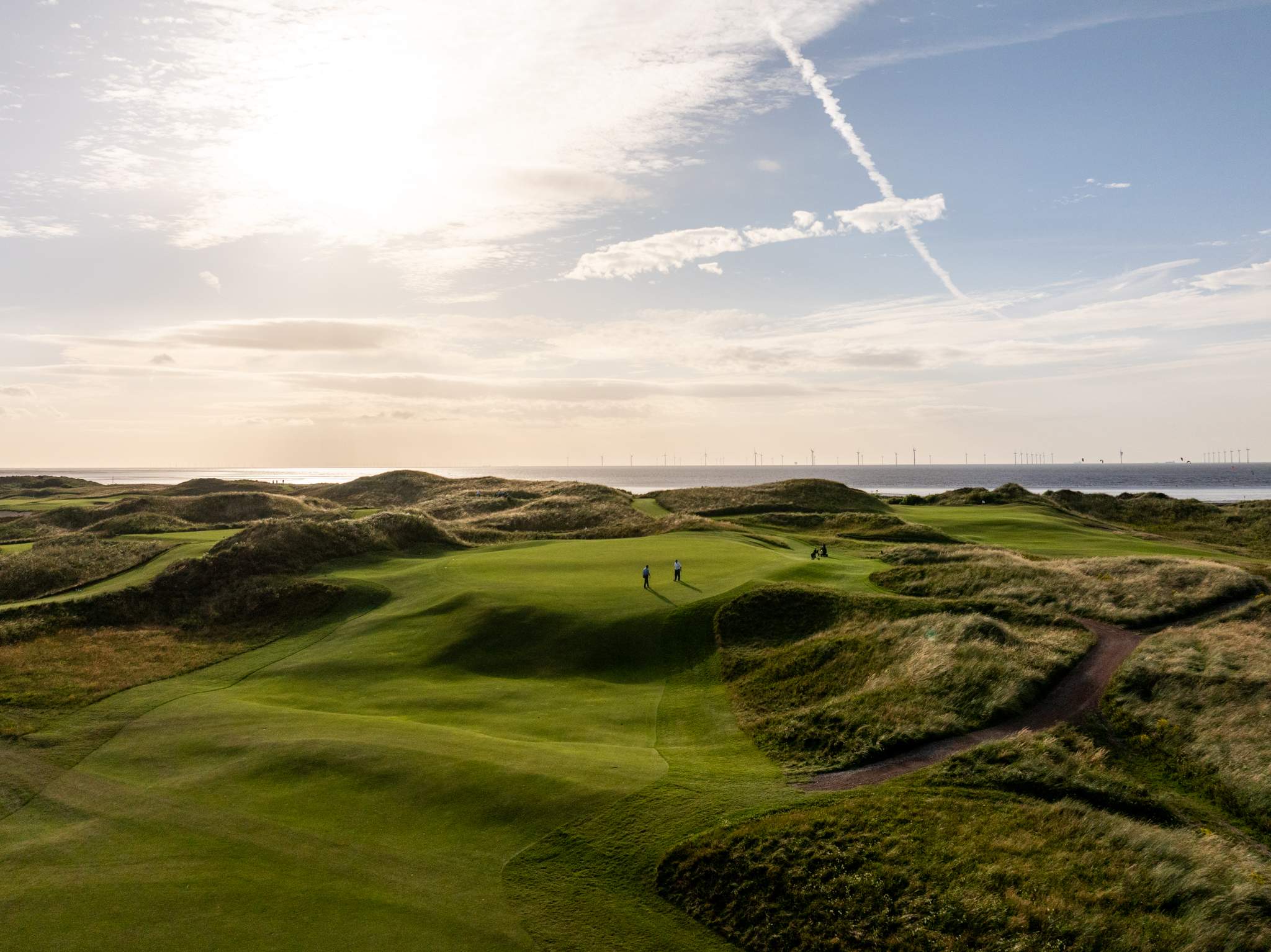
Liverpool’s golfing landscape is a masterclass in heritage, beauty, and challenge, where championship pedigree meets timeless charm. From the storied fairways of Royal Liverpool to the refined tranquility of the region’s parkland retreats, this corner of England offers an unforgettable experience for the discerning golfer.
When you’re ready to elevate your game and explore England’s finest courses in style, Premier Golf can curate a bespoke tour tailored to your tastes—ensuring every detail, on and off the course, is nothing short of exceptional.
FAQs
In the Liverpool area, Royal Liverpool (at Hoylake), Royal Birkdale, and Royal Lytham & St Annes are the three courses that have hosted major professional tournaments, including the Open Championship (The Open). Royal Liverpool has hosted it 12 times, Royal Birkdale 10 times, and Royal Lytham & St Annes 11 times.iq
The most challenging golf course in Liverpool is generally considered to be the Royal Liverpool Golf Club, also known as Hoylake.
Royal Liverpool is one of the toughest tests in championship golf, thanks to its firm, fast-running links terrain, deep strategic bunkering, and ever-present coastal winds. What truly sets it apart is the use of internal out-of-bounds, especially on the first and 18th holes, which adds pressure from the very start.u
Many of these courses are member-only, however, they have certain days and hours when visitors are able to play.
Premier Golf has exclusive relations with many of the courses mentioned above and will work with you to get you your ideal tee time.n
The best time to play golf in Liverpool, England, is generally during the spring and summer months, from April to September. This period offers the warmest weather and longer daylight hours, ideal for a comfortable golfing experience.
Share this:

